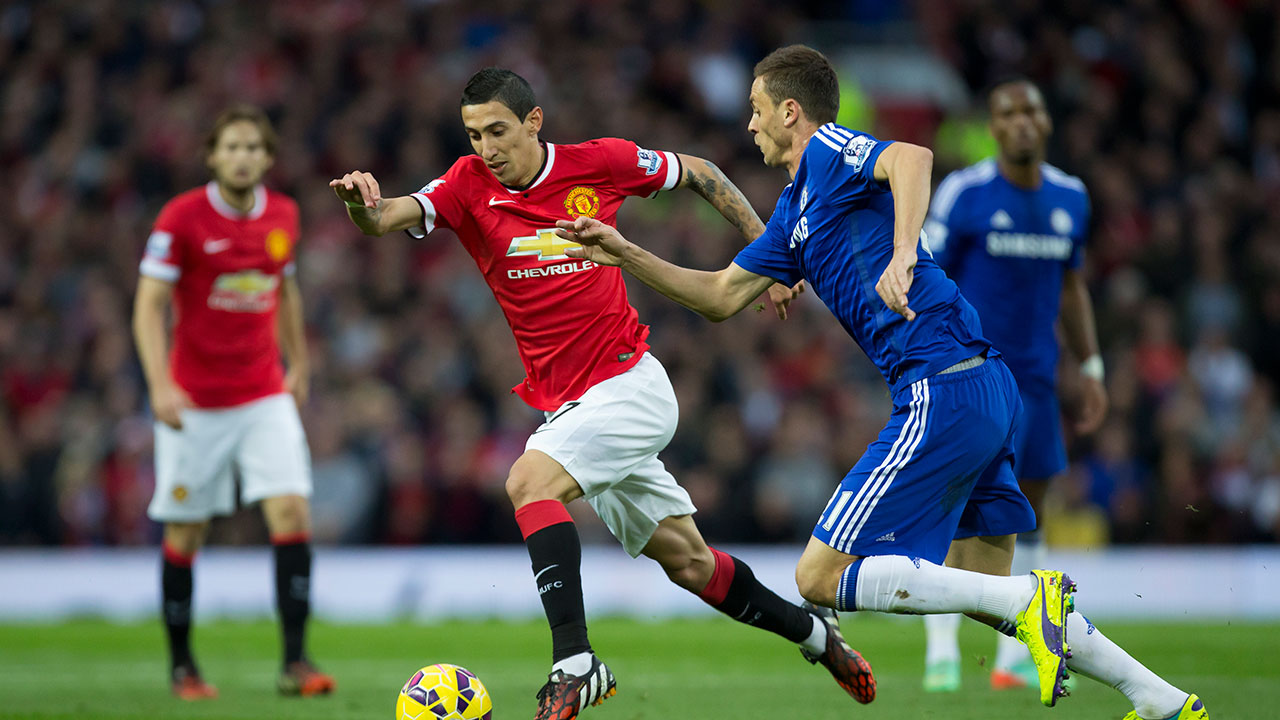Manchester United has a rather tenuous relationship with attacks based around crosses into the 18-yard box.
It is impossible to talk about Manchester United’s attack under David Moyes without mentioning the crosses. Famously, United had 82 crosses in a match against Fulham at Old Trafford, none of them successful. Although United has relied less on crosses during Louis Van Gaal’s reign they are still a central part of the team’s attack, more so than most of the other top sides in the Premier League.
What is interesting about Van Gaal’s team, especially over recent matches, is how the type of cross coming into the box seems to change based on whether or not United’s attack is playing well.
Soccer Central podcast: SPORTSNET.CA’s Soccer Central podcast, hosted by John Molinaro and James Sharman, takes an in-depth look at the beautiful game and offers timely and thoughtful analysis on the sport’s biggest issues. To listen and subscribe to the podcast, CLICK HERE.
There are lots of different types of crosses: in the air, on the ground, whipped into the box, bending inward or outward, etcetera. One key and distinguishing feature of a cross is whether it is delivered straight into the box from a position closer to the goal-line, or whether it is delivered from a position higher up the pitch and thus comes into the box on more of a diagonal angle.
In order to quantify the difference between these two types of crosses we can divide crosses between those coming from below the 18-yard line—imagining the penalty box extended all the way across the width of the pitch—and those delivered from above the 18-yard line.
Intuitively it makes sense that crosses from below the 18-yard line will be more threatening. First, they are more direct than crosses from above the 18-yard line, which have to be bent into the box. Second, when the cross originates from below the 18-yard line the player crossing the ball will be much closer to the player he is aiming for, making it easier to accurately deliver the ball. Finally, because crosses from below the 18-yard line can come in at a straight angle and don’t have to be curled there is often more speed behind them—meaning the player trying to finish the cross only needs to get an accurate touch since he can rely on the speed of the cross itself for the power of the finish.
Looking at the last 10 games that Manchester United has played some clear patterns emerge about when and from where on the pitch they cross the ball.
In games where United has more shots and shots on target, they also have more crosses. This is unsurprising, since taking more shots indicates that in these games United is spending more time in the attacking third and most likely has more of the ball. This trend probably doesn’t have much to do with Van Gaal telling the team to take more crosses, but is merely a result of more time spent attacking.
The second pattern is more surprising and much more interesting. In games where Manchester United is struggling, when they are taking fewer shots and shots on target, a much higher percentage of their crosses are coming from above the 18-yard line.
There is a negative correlation between the number of shots taken by United and the percentage of crosses taken from above the 18-yard line.
The negative correlation is even stronger between shots on target and the percentage of crosses from above the 18-yard line.
It’s clear that during the past 10 games when Manchester United’s attack has struggled to create chances they’ve also been putting in more crosses from higher up the pitch.
Over the past ten matches Manchester United has only lost one once, and that came at home to Southampton when 13 of United’s 30 crosses (43 percent) came from above the 18-yard line. The only other time during this period when United had a higher percentage of crosses from above the 18-yard line was the other match they played against Southampton at Saint Mary’s when 45 percent of their crosses came from above the 18-yard line and they only managed two shots on target. Fortuitously for United, both of these shots ended in goals and won them a thoroughly undeserved three points.
On the flip side, one of Manchester United’s best performances of the season was away to Tottenham, during the hectic post-Christmas schedule, when despite creating numerous chances they left frustrated with a 0-0 draw. Against Spurs only three of Manchester United’s 21 crosses (14 percent) were from above the 18-yard line.
One thing this pattern doesn’t tell us is what is causing what. Is it that when Manchester United is having difficulty breaking down an opponent’s defence that they settle for crosses from poorer positions? Or is it that during games where Manchester United cross more from these positions that they create fewer chances?
Van Gaal would probably prefer to see his team crossing the ball from prime positions below the 18-yard line, so it’s unlikely the team is actively deciding to cross from higher up the pitch in certain games. Thus the most logical explanation for this pattern is that in games where the opposition is defending well Manchester United is forced to start crossing from worse positions leading to an all out poorer attack.
A lot of the critiques of Manchester United’s endless crosses under David Moyes weren’t just about the volume of crosses, but also the quality of crosses. Given the clear link between shots taken and crossing positions, Louis Van Gaal would be wise to learn from the mistakes of his predecessor and curb this trend of Manchester United crossing from high up the pitch when things aren’t going their way.
Sam Gregory is soccer analytics writer based in Montreal. Follow Sam on Twitter and read more from him HERE


